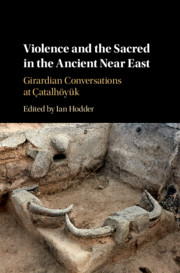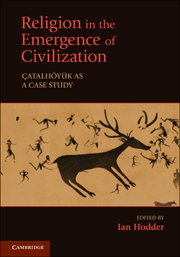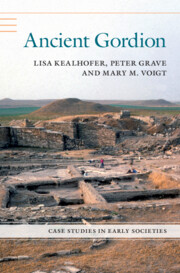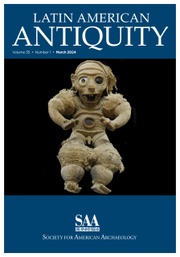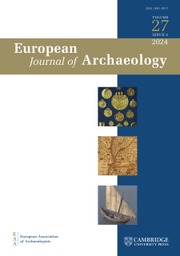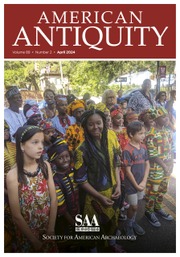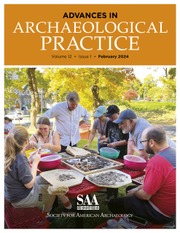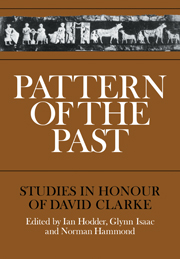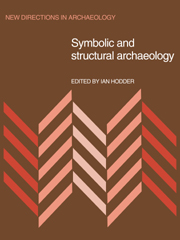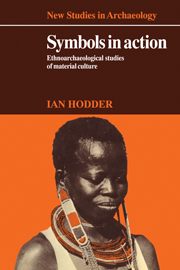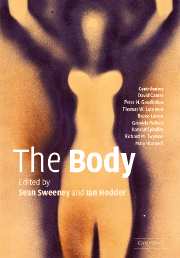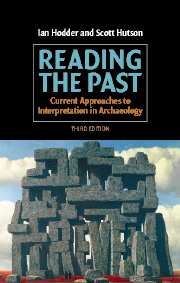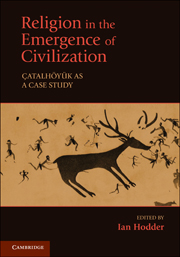Violence and the Sacred in the Ancient Near East
Girardian Conversations at Çatalhöyük
$120.00 USD
- Editor: Ian Hodder, Stanford University, California
- Date Published: March 2019
- availability: This ISBN is for an eBook version which is distributed on our behalf by a third party.
- format: Adobe eBook Reader
- isbn: 9781108591829
Find out more about Cambridge eBooks
$
120.00 USD
Adobe eBook Reader
Other available formats:
Hardback
Looking for an inspection copy?
This title is not currently available on inspection
-
This volume brings together two groups engaged with understanding the relationships between religion and violence. The first group consists of scholars of the mimetic theory of René Girard, for whom human violence is rooted in the rivalry that stems from imitation. To manage this violence of all against all, humans often turn to violence against one, the scapegoat, thereafter incorporated into ritual. The second group consists of archaeologists working at the Neolithic sites of Çatalhöyük and Göbekli Tepe in Turkey. At both sites there is evidence of religious practices that center on wild animals, often large and dangerous in form. Is it possible that these wild animals were ritually killed in the ways suggested by Girardian theorists? Were violence and the sacred intimately entwined and were these the processes that made possible and even stimulated the origins of farming in the ancient Near East? In this volume, Ian Hodder and a team of contributors seek to answer these questions by linking theory and data in exciting new ways.
Read more- Proposes a new view of human society in which tensions within religion generate change
- Links archaeology with the Mimetic Theory
- Provides new insight into two fascinating and iconic sites - Çatalhöyük and Göbekli Tepe
Customer reviews
Not yet reviewed
Be the first to review
Review was not posted due to profanity
×Product details
- Date Published: March 2019
- format: Adobe eBook Reader
- isbn: 9781108591829
- contains: 17 b/w illus.
- availability: This ISBN is for an eBook version which is distributed on our behalf by a third party.
Table of Contents
Part I. Introduction:
1. Setting the archaeological scene Ian Hodder
2. Introduction to the thought of René Girard William A. Johnsen
Part II. Violence and the Sacred:
3. Death in Çatalhöyük Wolfgang Palaver
4. A Girardian framework for violent injuries at Neolithic Çatalhöyük in their Western Asian context Christopher J. Knüsel, Bonnie Glencross and Marco Milella
5. Ritual practices and conflict mitigation at Early Neolithic Körtik Tepe and Göbekli Tepe, Upper Mesopotamia: a mimetic theoretical approach Lee Clare, Oliver Dietrich, Julia Gresky, Jens Notroff, Joris Peters and Nadja Pöllath
6. Paired leopards and encircled prey: images of rivalry and sacrifice at Çatalhöyük Mark Anspach
Part III. The Dialectics of Mimesis:
7. Mimetic theory, the wall paintings, and the domestication, de-domestication, and sacrifice of cattle at Çatalhöyük William A. Johnsen
8. The ordeal of the town. Rites and symbols at Çatalhöyük Benoît Chantre
9. Stretching Girard's hypothesis: road marks for a long-term perspective James Alison
10. Girard's anthropology vs. cognitive archaeology Jean-Pierre Dupuy
Part IV. Conclusion:
11. Religion as a factor in the development of settled life Ian Hodder.
Sorry, this resource is locked
Please register or sign in to request access. If you are having problems accessing these resources please email [email protected]
Register Sign in» Proceed
You are now leaving the Cambridge University Press website. Your eBook purchase and download will be completed by our partner www.ebooks.com. Please see the permission section of the www.ebooks.com catalogue page for details of the print & copy limits on our eBooks.
Continue ×Are you sure you want to delete your account?
This cannot be undone.
Thank you for your feedback which will help us improve our service.
If you requested a response, we will make sure to get back to you shortly.
×
